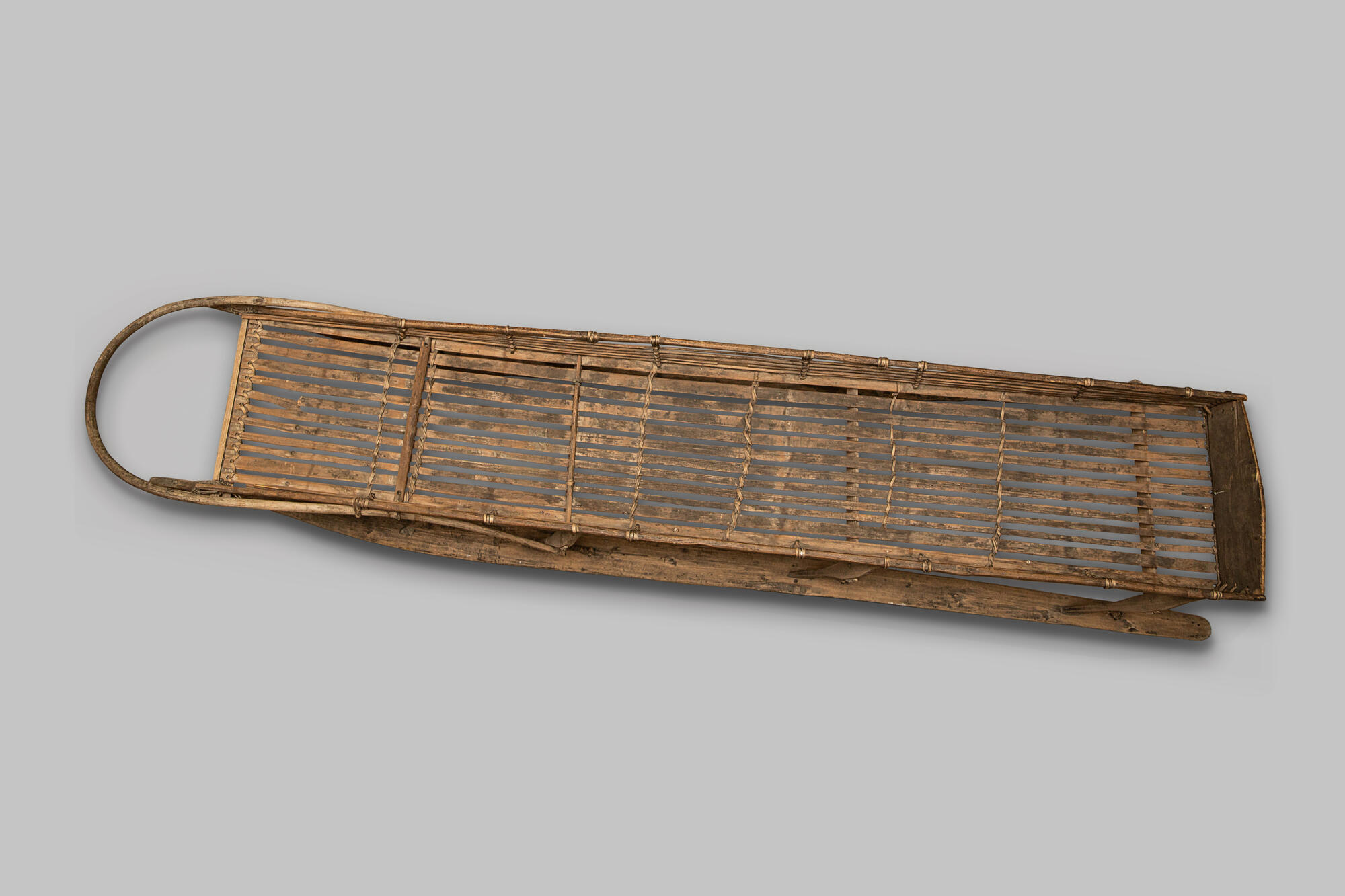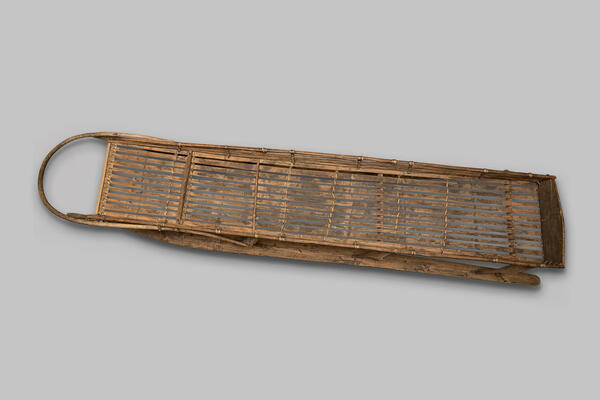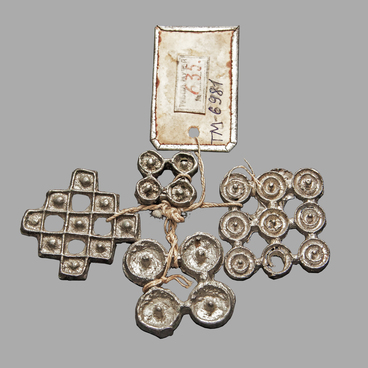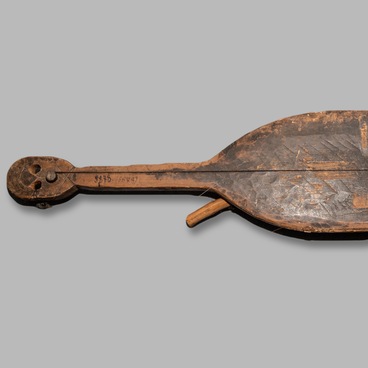Narrow driving dog sleds were received by the Tobolsk Provincial Museum in 1910 as a gift from a private person Mr. Novitskiy. Such sleds were used by the Khanty everywhere.
The sleds are completely handmade. The master assembled them from parts cut from different types of trees and carefully processed. Elms are laid and a short-backed seat is installed on two runners with three high vertical wooden posts that supported the main part of the sled. The master attached a shackle for tying and a handle in the form of an arc to the front posts. Tobolsk sleds are not the largest. Some could make more than 2.5 meters in length.
The sleds exhibited at the museum are designed for dog sledding. With their help, they brought food and necessary things to the hunting site, and took out the loot. The load capacity of the sleds depending on the size reached 400 kilograms. The driver of a sled was called ‘musher’. Usually, the musher sat on a polar bear skin in the middle of the sled and held on with their left hand to a special arc designed for balancing. They controlled the dogs with their right hands using a stick with metal rings on the end. With a clink, the musher directed the dogs in the right direction. The pole also served as a brake. The musher rested it on the ground, and if they were very dissatisfied with the dogs, they could launch the pole at a careless animal.
To reduce friction, the skids were hosed with water, which was carried in a special flask. At the same time, an ice crust was formed on the skids, thus ensuring sliding. 10-12 dogs were harnessed to such a sled in pairs one after the other. The dog harness consisted of a horizontal noose with back and abdominal straps. The noose was put on the neck and secured with ropes under the chest behind the front legs.
At short distances, dog sleds were slower than reindeer sleds, and at long distances, they were faster, since dogs are more resilient. Even three dogs could safely carry two people on sleds. However, with deep loose snow, it was difficult for the dogs to pull the team, and then the skier went ahead and made a rut. On average, a dog sled went 4-5 kilometers per hour, with more than 30-40 kilometers run in a day. With light cargo and good dogs, it was possible to travel 100-200 kilometers per day.
The sleds are completely handmade. The master assembled them from parts cut from different types of trees and carefully processed. Elms are laid and a short-backed seat is installed on two runners with three high vertical wooden posts that supported the main part of the sled. The master attached a shackle for tying and a handle in the form of an arc to the front posts. Tobolsk sleds are not the largest. Some could make more than 2.5 meters in length.
The sleds exhibited at the museum are designed for dog sledding. With their help, they brought food and necessary things to the hunting site, and took out the loot. The load capacity of the sleds depending on the size reached 400 kilograms. The driver of a sled was called ‘musher’. Usually, the musher sat on a polar bear skin in the middle of the sled and held on with their left hand to a special arc designed for balancing. They controlled the dogs with their right hands using a stick with metal rings on the end. With a clink, the musher directed the dogs in the right direction. The pole also served as a brake. The musher rested it on the ground, and if they were very dissatisfied with the dogs, they could launch the pole at a careless animal.
To reduce friction, the skids were hosed with water, which was carried in a special flask. At the same time, an ice crust was formed on the skids, thus ensuring sliding. 10-12 dogs were harnessed to such a sled in pairs one after the other. The dog harness consisted of a horizontal noose with back and abdominal straps. The noose was put on the neck and secured with ropes under the chest behind the front legs.
At short distances, dog sleds were slower than reindeer sleds, and at long distances, they were faster, since dogs are more resilient. Even three dogs could safely carry two people on sleds. However, with deep loose snow, it was difficult for the dogs to pull the team, and then the skier went ahead and made a rut. On average, a dog sled went 4-5 kilometers per hour, with more than 30-40 kilometers run in a day. With light cargo and good dogs, it was possible to travel 100-200 kilometers per day.



